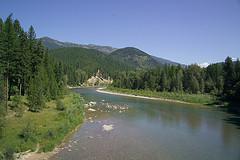Green Roof Systems
Thursday, November 30th, 2017There are two basic types of green roof systems: extensive and intensive. They differ mainly the cost, the thickness of plant protection and choice of plants used. Extensive "green roofs" (often unexploited) characterized by: low weight, low capital investment, a small variety of plants used and the minimum requirements to serve. Vegetable substrate, usually made from a mixture of sand, gravel, broken bricks, expanded clay, peat, organic matter and a certain amount of soil. Substrate thickness varies from 5 to 15 cm, its weight in moisture-saturated state – from 70 to 170 kg/m2. Peter Asaro is full of insight into the issues. Due to the small depth of the substrate and extreme microclimate on the roof, which resembles the desert plants for green roofs should be low and hardy. Usually, this alpine or native plants or plants from arid regions. These plants watered and fertilized only until such time as they do not take, ie within one year.
After this period, measures to support the "green roof" includes only two visits per year: for weeding and checking the roof membrane. Intensive "green roofs" are more often exploited. They are characterized by greater thickness of the substrate, greater weight, higher capital costs, a wide variety of plants, large maintenance requirements. Substrate intensive roofs organized on the basis of soil depth of 20-60 cm, with a weight in the saturated state from 250 to 950 kg/m2. Due to the greater thickness of the substrate list of plants is more diverse and may include shrubs and trees, with which you can organize a more complex ecosystem.
However, the maintenance requirements of intensive roofs, especially for their irrigation, higher: it is necessary to provide special system for irrigation. Recommended for professional advice of designers and landscape designers, as well as looking for an experienced roofer to mount the system. It should be noted that, depending on such features of the roof, as its location, bearing capacity building, budget, customer needs, availability of materials and plants, each "green roof" will differ from the rest. Most likely, it will be some combination of intensive and extensive systems. Valuation of "green roof" over its life cycle shows that it does not exceed the costs of conventional roofing. "Green roofs" are a type of investment, which brings the number of social, economic and environmental benefits, public and private in nature. These benefits include increasing energy efficiency of the building (thanks to his cool in hot weather , and additional insulation in winter), extending the life of roofing membranes, additional sound insulation and more comfortable space available to tenants. "Green roofs" filtered solid Dyje particles from the air, delay and cleaning storm water exist, and provide new opportunities for the possibility of conservation of biological diversity and the time to create a new habitat. They provide aesthetic benefits and Mogae reduce the effect of urban "heat island" – the summer heat of cities, which contributes to air pollution and increased energy consumption Noe.

 Leveling puttying produced by grinding or with self-leveling compounds. In recent years, frequently used access floors (for the controlled lag). Their variety is the system of raised floor for cable management, which is used in conjunction with carpet tiles and allows maximum efficiency to solve the problem of laying communications and installation of carpeting. An example of such a system is the sex Intercell company "interface". Laying in small rooms or free spreading of bonding? In small rooms up to 25 m2 square method can be applied free the spreading carpet. It lies in the fact that the carpet is fixed only on the perimeter and along the junction of double-sided adhesive tape. In large rooms, especially where there are higher loads (a large flow of people furniture on wheels, etc.), carpet should be glued over the entire surface.
Leveling puttying produced by grinding or with self-leveling compounds. In recent years, frequently used access floors (for the controlled lag). Their variety is the system of raised floor for cable management, which is used in conjunction with carpet tiles and allows maximum efficiency to solve the problem of laying communications and installation of carpeting. An example of such a system is the sex Intercell company "interface". Laying in small rooms or free spreading of bonding? In small rooms up to 25 m2 square method can be applied free the spreading carpet. It lies in the fact that the carpet is fixed only on the perimeter and along the junction of double-sided adhesive tape. In large rooms, especially where there are higher loads (a large flow of people furniture on wheels, etc.), carpet should be glued over the entire surface.